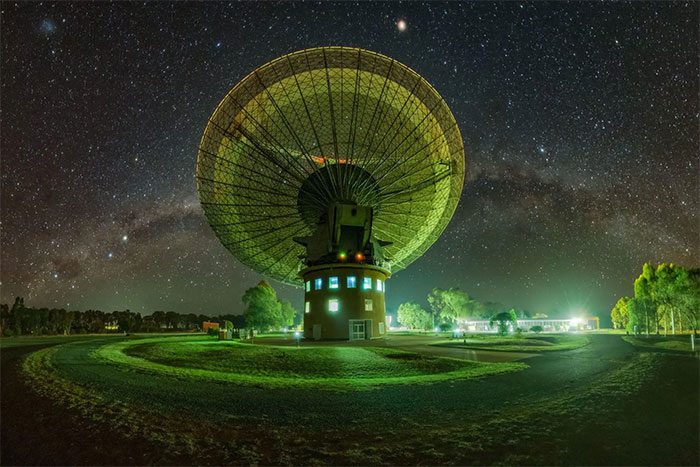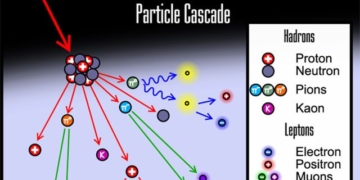A deadly world located 8,100 light-years away from us has unexpectedly emitted a type of radio signal never seen before after more than a decade of silence.
Astronomers using the Parkes Radio Telescope (Murriyang) from CSIRO (Commonwealth Scientific and Industrial Research Organisation – Australia) have detected unusual radio signals from a “zombie” object named XTE J1810-197.

Parkes Telescope (Murriyang), the observation facility that recorded the unusual radio signal – (Image: CSIRO).
According to Sci-News, XTE J1810-197 is a radio magnetar – also known as a highly magnetized neutron star – located 8,100 light-years away in the constellation Sagittarius.
Neutron stars are the “zombies” of collapsed giant stars, compacting into a small object but possessing tremendous energy.
Magnetars are a type of neutron star with extreme magnetic fields and are the strongest sources of magnetism in the universe. Therefore, it can be said that radio magnetars are the “monsters of the cosmos.”
This is why the radio signals from it can travel vast distances to reach Earth-based observatories.

The unusual radio signals identified as originating from XTE J1810-197, a cosmic “zombie” – (Graphic: SWINBURNE UNIVERSITY OF TECHNOLOGY).
The radio signals from XTE J1810-197 are particularly strange, observed by radio telescopes as continuously changing circularly polarized light, indicating that the star appears to be wobbling violently.
“We have never seen anything like this” – Dr. Marcus Lower from CSIRO acknowledged.
Unusual radio signals from space have previously been suspected to be linked to extraterrestrial civilizations.
However, modern observation tools increasingly point to many natural sources of radio signals, including neutron stars and neutron star mergers, black hole mergers…
Thus, despite the strange and irregular variations, it is clear that the source of signals from XTE J1810-197 is unrelated to alien civilizations.
Nonetheless, it is very peculiar as XTE J1810-197 is one of the rare magnetars capable of producing radio pulses, not to mention such an unusual form of radio pulse.
This anomaly may be explained by a high-temperature plasma structure above the magnetic poles of the magnetar, acting as a polarizing filter. However, this remains merely a hypothesis.
These findings have helped clarify many aspects surrounding XTE J1810-197, an object that has puzzled astronomers for years.
In 2003, XTE J1810-197 emitted perplexing radio signals, then abruptly disappeared from all observation instruments for over a decade.
The new discovery regarding this radio magnetar has just been published in the scientific journal Nature Astronomy.





















































